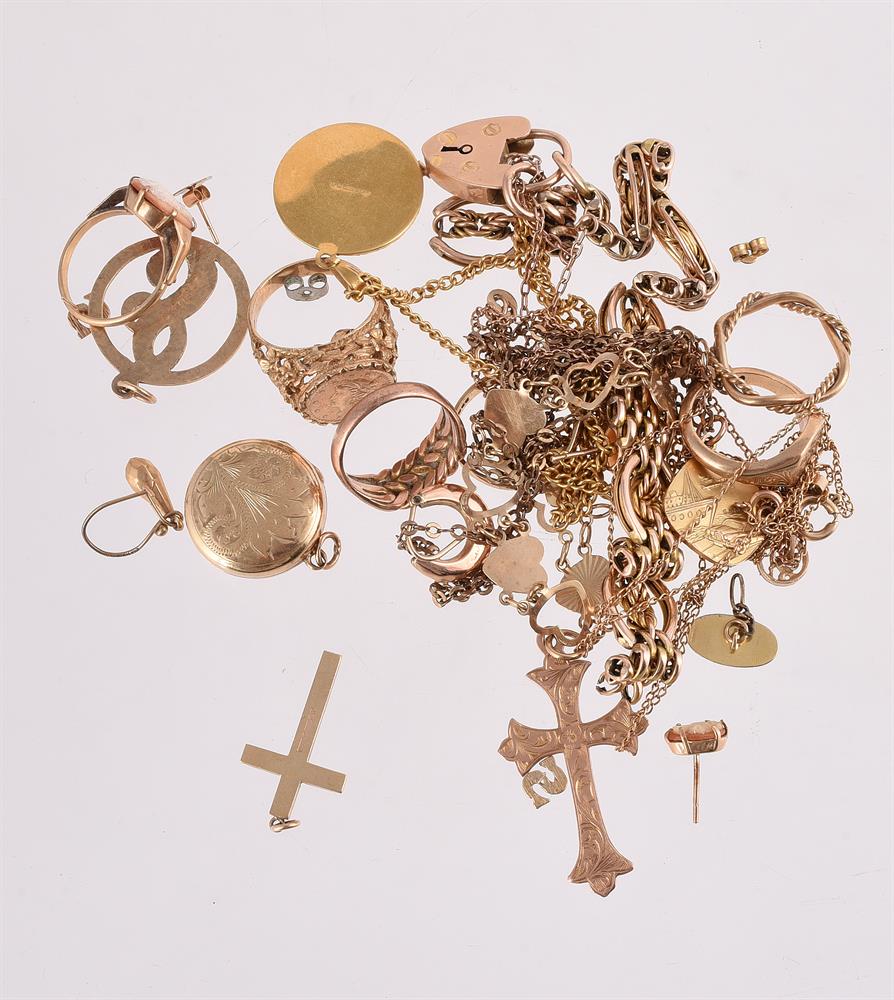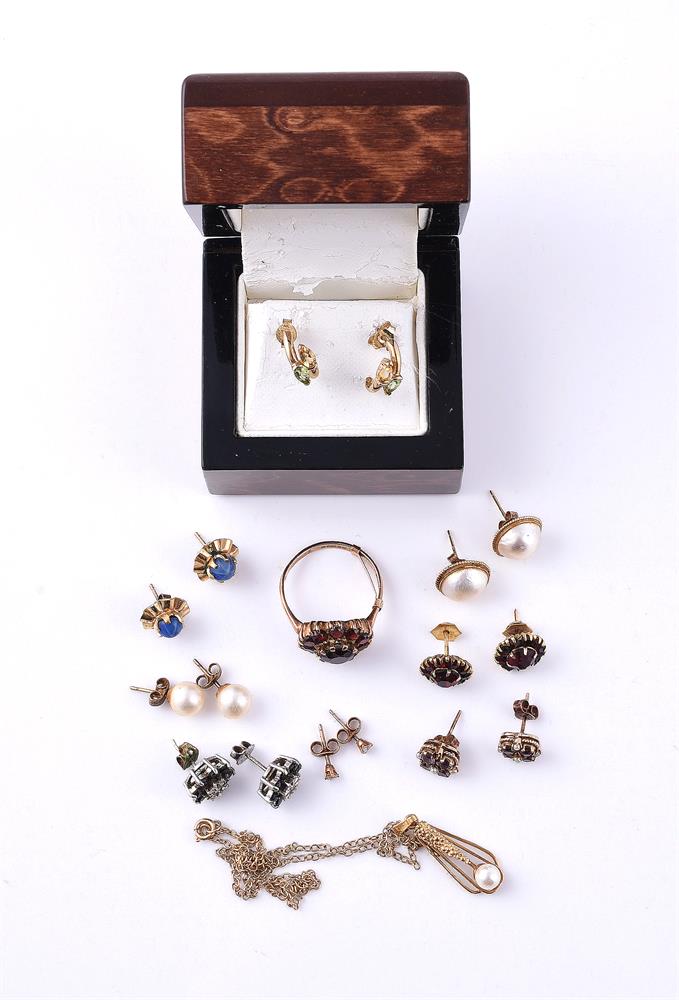A 22 carat gold and diamond moon sculpture, commemorating the first moon landing by Apollo 11 in 1969with Louis Osman maker's mark and Malcolm Appleby monogram, London 1969 The spherical model of the moon with realistic, finely detailed cratered surface, set with a single diamond to indicate the moon landing site in the Sea of Tranquillity, contained in an original leather covered fitted case, inside of cover in gilt letters reads 'APOLLO MOON NUMBER 19', near the hallmark the moon is stamped '100', diameter 5.5cm, weight total 324.5gms.FootnotesProvenance By descent from their parents, the present owners recall that this was won at a charity function, possibly in London. Another example, box numbered 17 was donated to Baroness Hylton-Foster by Simon Horn, to be auctioned in aid of the Red Cross Centenary Year Appeal in 1970 - 'Red Cross Golden Draw The Apollo Moon'. Louis Osman was commissioned by English art patron Simon Horn to make models of the moon to commemorate the lunar landing. Osman decided to create these through the electro-forming process, a new method he had just used to create the crown for the Investiture of Charles, Prince of Wales. Malcolm Appleby, in conjunction with Osman, also worked on the crown, engraving the central orb. This was one of Appleby's earliest professional engagements. Soon after completing the crown the pair worked together again, this time Appleby was given instructions by Osman to model the moon sculptures in just four days. After obtaining early images of the moon and using a steel ball, he chiselled the intricate design into the surface of the steel ball. Appleby comments on the next processes used to create the moon sculptures, 'A rubber mould was made from my steel original. The rubber mould was cut into two halves. The steel model removed and the gold electro formed into the rubber mould. BJS Plating electro formed it in 24ct gold; the two halves were welded together with 24ct gold. This was all new technology at the time using 24ct gold.' He also notes that this was made from 24 carat gold and because an assay mark did not exist for this grade the '22' mark had to be used. Appleby finished his work just as the astronauts landed. The first four moon sculptures were sent to the United States and presented to Mrs Rose Kennedy, the mother of the late American President, in remembrance of her son's famous statement to Congress in 1961, and the three Apollo 11 astronauts; Neil Armstrong, Buzz Aldrin and Michael Collins It was intended that a further 100 were to be made as an edition, but complications arose with the electro-forming process and the models were never produced commercially as planned. Therefore, only a small number of these editions were ever created. These moon sculptures, The Prince of Wales Investiture Crown and the gold 'Prince of Wales' cup were some of Appleby's earliest works and were made during the short period that he worked with Osman 1968–70. The 'Prince of Wales' cup was sold in these rooms on 30th November 2011, lot 129 for £73,250. LOUIS OSMAN (1914 – 1996) A distinguished architect, artist and goldsmith. Born in 1914. Osman in 1931 originally trained at the Bartlett School as an architect. He then studied drawing at the Slade School. As an architect Osman's work included being part of the re-building of bomb-damaged Coventry. In 1956 he turned to goldsmithing and jewellery, being much influenced by Graham Hughes and Gerald Benney. Mainly working from commissions Osman's work had a handmade appearance. MALCOLM APPLEBY Malcolm Appleby was born in West Wickham in Kent in 1946. He studied at Beckenham School of Art, Ravensbourne College of Art and Design, Central School of Art, Sir John Cass School of Art from 1961 to 1966. He studied at the Royal College of Art from 1966 to 1968. When at the RCA Appleby discovered engraving at John Wilkes Gun & Rifle Makers in Soho. It was at this time he started his career as an engraver and developed new engraving techniques
A 22 carat gold and diamond moon sculpture, commemorating the first moon landing by Apollo 11 in 1969with Louis Osman maker's mark and Malcolm Appleby monogram, London 1969 The spherical model of the moon with realistic, finely detailed cratered surface, set with a single diamond to indicate the moon landing site in the Sea of Tranquillity, contained in an original leather covered fitted case, inside of cover in gilt letters reads 'APOLLO MOON NUMBER 19', near the hallmark the moon is stamped '100', diameter 5.5cm, weight total 324.5gms.FootnotesProvenance By descent from their parents, the present owners recall that this was won at a charity function, possibly in London. Another example, box numbered 17 was donated to Baroness Hylton-Foster by Simon Horn, to be auctioned in aid of the Red Cross Centenary Year Appeal in 1970 - 'Red Cross Golden Draw The Apollo Moon'. Louis Osman was commissioned by English art patron Simon Horn to make models of the moon to commemorate the lunar landing. Osman decided to create these through the electro-forming process, a new method he had just used to create the crown for the Investiture of Charles, Prince of Wales. Malcolm Appleby, in conjunction with Osman, also worked on the crown, engraving the central orb. This was one of Appleby's earliest professional engagements. Soon after completing the crown the pair worked together again, this time Appleby was given instructions by Osman to model the moon sculptures in just four days. After obtaining early images of the moon and using a steel ball, he chiselled the intricate design into the surface of the steel ball. Appleby comments on the next processes used to create the moon sculptures, 'A rubber mould was made from my steel original. The rubber mould was cut into two halves. The steel model removed and the gold electro formed into the rubber mould. BJS Plating electro formed it in 24ct gold; the two halves were welded together with 24ct gold. This was all new technology at the time using 24ct gold.' He also notes that this was made from 24 carat gold and because an assay mark did not exist for this grade the '22' mark had to be used. Appleby finished his work just as the astronauts landed. The first four moon sculptures were sent to the United States and presented to Mrs Rose Kennedy, the mother of the late American President, in remembrance of her son's famous statement to Congress in 1961, and the three Apollo 11 astronauts; Neil Armstrong, Buzz Aldrin and Michael Collins It was intended that a further 100 were to be made as an edition, but complications arose with the electro-forming process and the models were never produced commercially as planned. Therefore, only a small number of these editions were ever created. These moon sculptures, The Prince of Wales Investiture Crown and the gold 'Prince of Wales' cup were some of Appleby's earliest works and were made during the short period that he worked with Osman 1968–70. The 'Prince of Wales' cup was sold in these rooms on 30th November 2011, lot 129 for £73,250. LOUIS OSMAN (1914 – 1996) A distinguished architect, artist and goldsmith. Born in 1914. Osman in 1931 originally trained at the Bartlett School as an architect. He then studied drawing at the Slade School. As an architect Osman's work included being part of the re-building of bomb-damaged Coventry. In 1956 he turned to goldsmithing and jewellery, being much influenced by Graham Hughes and Gerald Benney. Mainly working from commissions Osman's work had a handmade appearance. MALCOLM APPLEBY Malcolm Appleby was born in West Wickham in Kent in 1946. He studied at Beckenham School of Art, Ravensbourne College of Art and Design, Central School of Art, Sir John Cass School of Art from 1961 to 1966. He studied at the Royal College of Art from 1966 to 1968. When at the RCA Appleby discovered engraving at John Wilkes Gun & Rifle Makers in Soho. It was at this time he started his career as an engraver and developed new engraving techniques















Testen Sie LotSearch und seine Premium-Features 7 Tage - ohne Kosten!
Lassen Sie sich automatisch über neue Objekte in kommenden Auktionen benachrichtigen.
Suchauftrag anlegen